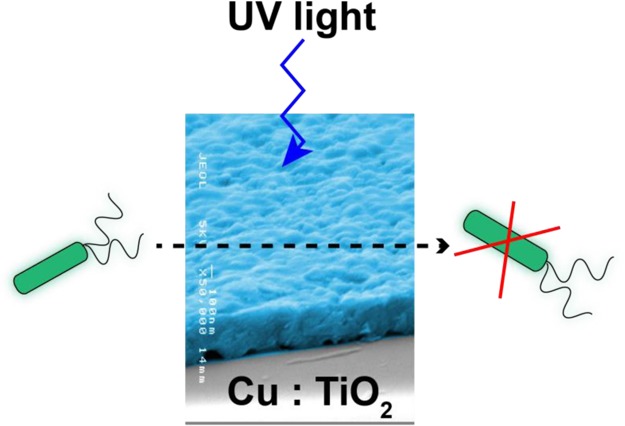- Record: found
- Abstract: found
- Article: not found
Enhanced Photocatalytic and Antibacterial Ability of Cu-Doped Anatase TiO 2 Thin Films: Theory and Experiment

Read this article at
Abstract

Multifunctional thin films which can display both photocatalytic and antibacterial activity are of great interest industrially. Here, for the first time, we have used aerosol-assisted chemical vapor deposition to deposit highly photoactive thin films of Cu-doped anatase TiO 2 on glass substrates. The films displayed much enhanced photocatalytic activity relative to pure anatase and showed excellent antibacterial (vs Staphylococcus aureus and Escherichia coli) ability. Using a combination of transient absorption spectroscopy, photoluminescence measurements, and hybrid density functional theory calculations, we have gained nanoscopic insights into the improved properties of the Cu-doped TiO 2 films. Our analysis has highlighted that the interactions between substitutional and interstitial Cu in the anatase lattice can explain the extended exciton lifetimes observed in the doped samples and the enhanced UV photoactivities observed.
Related collections
Most cited references90
- Record: found
- Abstract: not found
- Article: not found
Efficient iterative schemes forab initiototal-energy calculations using a plane-wave basis set
- Record: found
- Abstract: not found
- Article: not found
TiO2Photocatalysis: A Historical Overview and Future Prospects
- Record: found
- Abstract: found
- Article: not found
